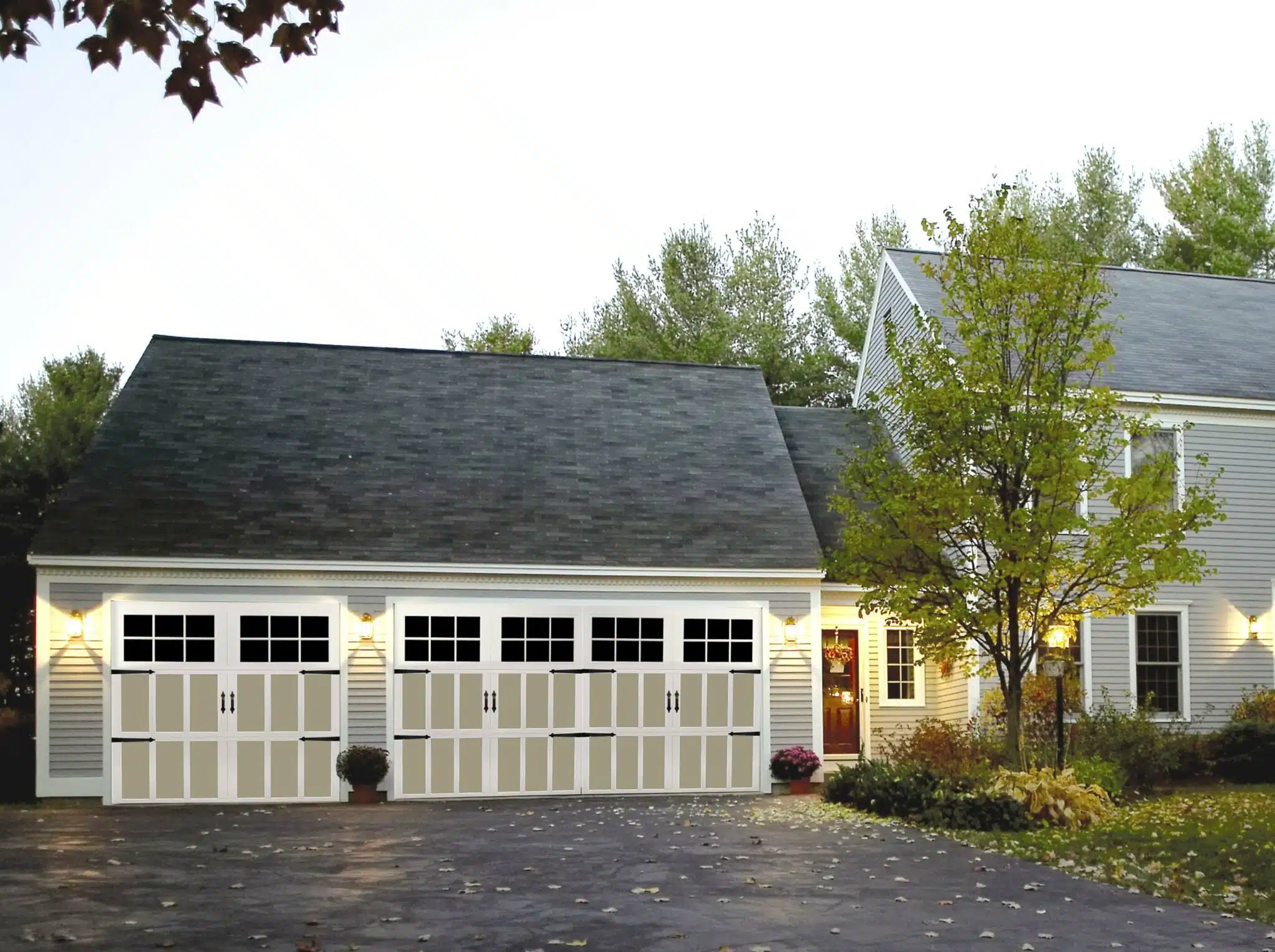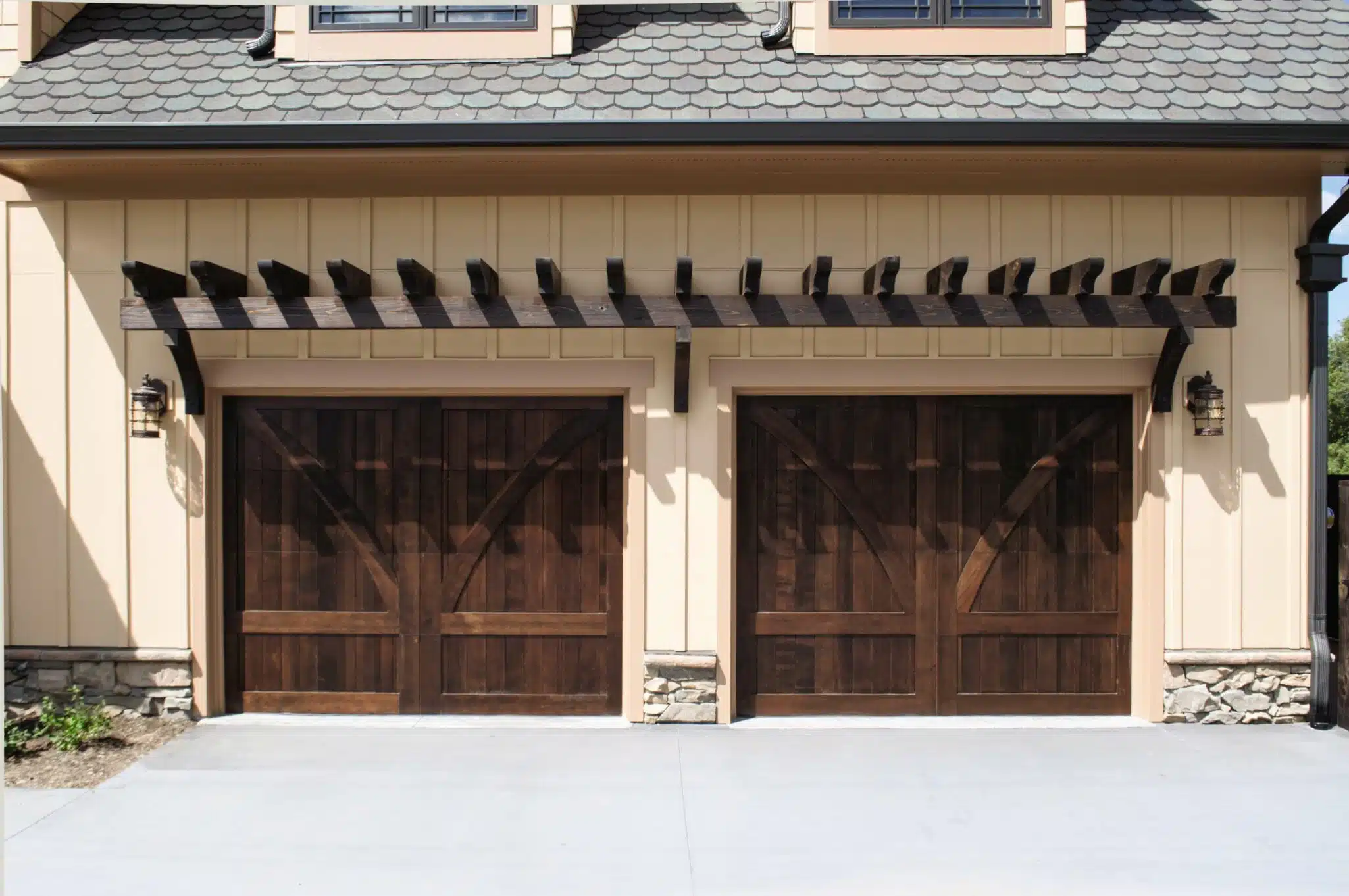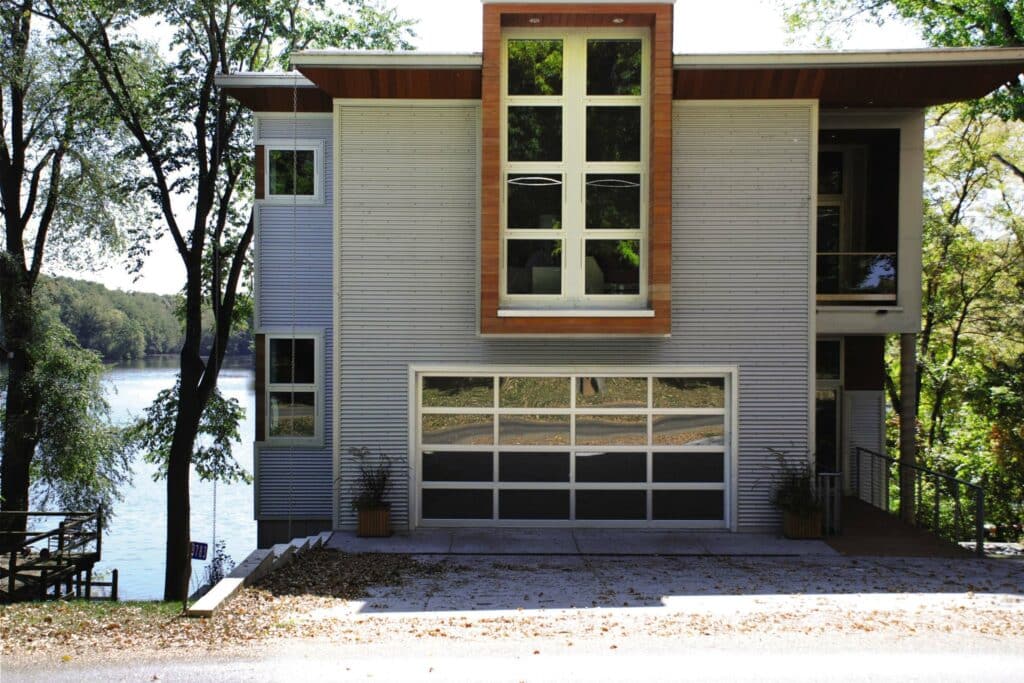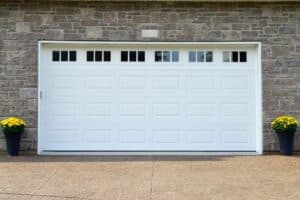In today’s eco-conscious world, the materials we choose for our homes, including garage doors, play a crucial role in our planet’s health. This guide delves into the environmental impact of various garage door materials, offering insights for those seeking to make informed, sustainable choices. From traditional wood to aluminum garage doors, understand how your selection can contribute to a greener planet.
The Carbon Footprint of Garage Door Materials
The carbon footprint of garage door materials is a crucial consideration for environmentally conscious homeowners. This footprint encompasses all the greenhouse gas emissions associated with a product, from the extraction of raw materials to the end of its life. Let’s delve deeper into how each stage of a garage door’s life cycle contributes to its overall environmental impact.
Production
The production process is often the most significant contributor to a material’s carbon footprint. For instance, the manufacture of aluminum and steel doors involves mining, refining, and processing of raw materials, which are energy-intensive processes.
The production of wood doors, on the other hand, may have a lower immediate energy cost, but it’s essential to consider the source of the wood. Sustainable forestry practices and certifications, like those from the Forest Stewardship Council (FSC), ensure that wood is harvested in a way that minimizes environmental impact.
Transportation
Transportation contributes to the carbon footprint through the emissions generated while moving materials from their source to the manufacturing facility and then to the consumer. Materials sourced locally or those requiring less energy for transportation (due to lighter weight or more efficient shipping methods) can significantly reduce the overall carbon footprint.
Installation
The installation process also plays a role, albeit smaller, in the material’s carbon footprint. Energy-efficient installation practices and materials can minimize the environmental impact.
For example, choosing insulation materials with low environmental impact can enhance the energy efficiency of the garage door without adding significantly to the carbon footprint.
Maintenance
Maintenance practices influence the longevity and energy efficiency of a garage door. Materials that require less frequent replacement or repairs contribute to lower carbon emissions over the door’s life span.

For example, durable materials like steel might need less maintenance compared to wood, which may require regular treatments to prevent rot or decay.
Disposal
The end-of-life disposal of garage door materials significantly affects their overall environmental impact. Materials that are recyclable or biodegradable, such as certain metals and woods, can reduce the carbon footprint by minimizing waste and the need for new raw materials.
Conversely, materials that end up in landfills contribute to greenhouse gas emissions through decomposition or by occupying land space that could be used for carbon sequestering vegetation.
Choosing the Right Material for Your Needs
Making an informed decision requires a comprehensive understanding of how each material stacks up in these areas. Let’s dive into a cost-benefit analysis of the most common eco-friendly garage door materials to help you find the balance that’s right for your home and values.
Wood: The Natural Choice
- Aesthetics: Wood offers timeless beauty and can be customized in a variety of styles and finishes. It provides a warm, natural look that many homeowners desire.
- Environmental Impact: Wood is renewable and biodegradable, with a lower carbon footprint than metals if sourced sustainably. Look for certifications like FSC to ensure the wood comes from responsibly managed forests.
- Cost: Initial costs for wooden garage doors can be high, especially for premium woods. However, the value it adds to your home’s appearance and market value can offset the initial investment.
- Durability and Maintenance: Requires regular maintenance to protect against weather and pests, which can add to the lifetime cost. However, with proper care, wood doors can last for decades.
Steel: Strong and Recyclable
- Aesthetics: Steel doors offer a sleek, modern look and can be painted to match your home. They’re less customizable than wood but available in various styles.
- Environmental Impact: Steel is highly recyclable, reducing its end-of-life impact. However, its production is energy-intensive, which is a factor to consider in its overall environmental footprint.
- Cost: Steel doors are generally more affordable than wood and offer good value due to their durability and low maintenance needs.
- Durability and Maintenance: Very durable and resistant to warping, rotting, and pests. Minimal maintenance is required, making it a cost-effective choice over its lifespan.
Aluminum: Lightweight and Rustproof
- Aesthetics: Aluminum doors can be designed to mimic the look of wood or offer a modern aesthetic. They’re versatile and can fit various home styles.
- Environmental Impact: Like steel, aluminum is recyclable, which helps reduce its environmental footprint. Its production is energy-intensive, but its lightweight nature reduces transportation emissions.
- Cost: Generally more expensive than steel but less than wood, aluminum strikes a middle ground in terms of cost. Its durability and low maintenance needs can make it a cost-effective option over time.
- Durability and Maintenance: Aluminum is rustproof and resistant to corrosion, making it ideal for coastal areas. It requires little maintenance, though it is more prone to denting than steel.
Impact on Home Value and Appeal
Eco-friendly garage doors not only benefit the planet but also appeal to environmentally conscious homebuyers, potentially increasing home value.
The integration of eco-friendly features into a home is becoming increasingly important for homeowners and potential buyers alike, with garage doors being no exception. Choosing an environmentally sustainable garage door can significantly impact your home’s value and appeal, catering to a growing demographic that prioritizes green living. This section explores how eco-friendly garage doors enhance both the monetary and aesthetic value of a home.
Enhancing Home Value
Energy Efficiency: Eco-friendly garage doors often come with better insulation and energy-saving features. This can lead to reduced energy costs for heating and cooling the home, a selling point that appeals to cost-conscious and environmentally aware buyers. Homes with energy-efficient features can command higher prices on the market, as they offer long-term savings on utility bills.

Sustainability as a Selling Point: With an increasing awareness of environmental issues, sustainability has become a critical factor for many homebuyers. A garage door made from recycled materials or sustainable wood can be a significant selling point, distinguishing your home from others on the market. This environmental consideration can translate into higher property values, as it aligns with the values of a growing segment of the population.
Future-Proofing the Home: As environmental regulations become stricter and green living becomes more mainstream, homes that already feature eco-friendly elements are ahead of the curve. Investing in a sustainable garage door can future-proof your home, making it more attractive to buyers concerned about potential future upgrades to meet environmental standards.
Boosting Curb Appeal
Aesthetic Versatility: Eco-friendly garage doors come in various materials and designs, offering aesthetic versatility that can boost your home’s curb appeal. Whether you opt for a classic wood look or a modern composite design, you can enhance your home’s exterior while staying true to sustainable choices.
The Eco-Friendly Badge: For many, the appeal of an eco-friendly home extends beyond its physical appearance to what it represents. A home that features environmentally sustainable elements projects a responsible and modern image. This can make your property more appealing to buyers who value environmental stewardship as part of their lifestyle.
Community and Market Trends: In many communities, there is a growing trend towards sustainability and eco-friendly living. By installing an eco-friendly garage door, you’re not only keeping pace with this trend but also appealing to the market dynamics of your area. This alignment with community values can make your home more desirable and competitive in the real estate market.
Conclusion
An eco-friendly garage door is an investment that pays dividends both in terms of home value and appeal. It reflects a commitment to sustainability and energy efficiency, qualities increasingly sought after by today’s homebuyers. By choosing a garage door that minimizes environmental impact, homeowners can enjoy the benefits of a more attractive, valuable, and future-proofed property.
FAQs
The environmental impact varies by material, considering factors such as the carbon footprint during production, transportation, installation, maintenance, and disposal. Sustainable choices reduce overall impact.
Production is a major contributor, with energy-intensive processes for materials like aluminum and steel. Wood has a lower immediate energy cost, especially when sourced sustainably.
Transportation affects the carbon footprint through emissions generated while moving materials. Choosing local or lightweight materials can reduce this impact.
Yes, though smaller compared to other stages, choosing energy-efficient installation practices can minimize environmental impact.
Materials that require less frequent maintenance contribute to lower carbon emissions over the door’s lifespan due to reduced need for repairs or replacements.
Recyclable or biodegradable materials minimize waste and need for new raw materials, reducing the carbon footprint compared to materials that end up in landfills.
Wood, if sourced sustainably, has a lower carbon footprint than metals and is renewable and biodegradable, making it a more eco-friendly choice.
Steel doors are durable, recyclable, and require minimal maintenance, though their production is energy-intensive.








